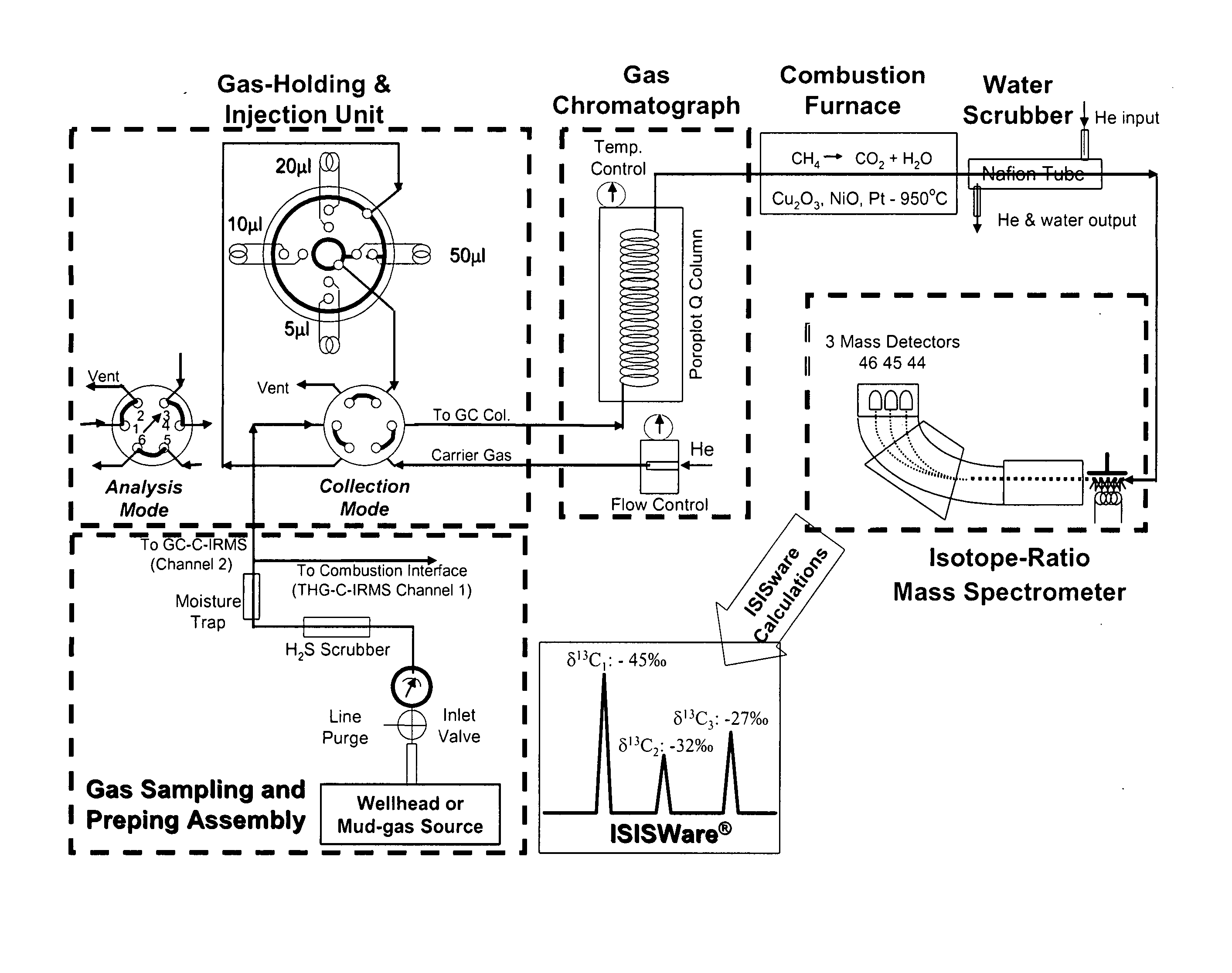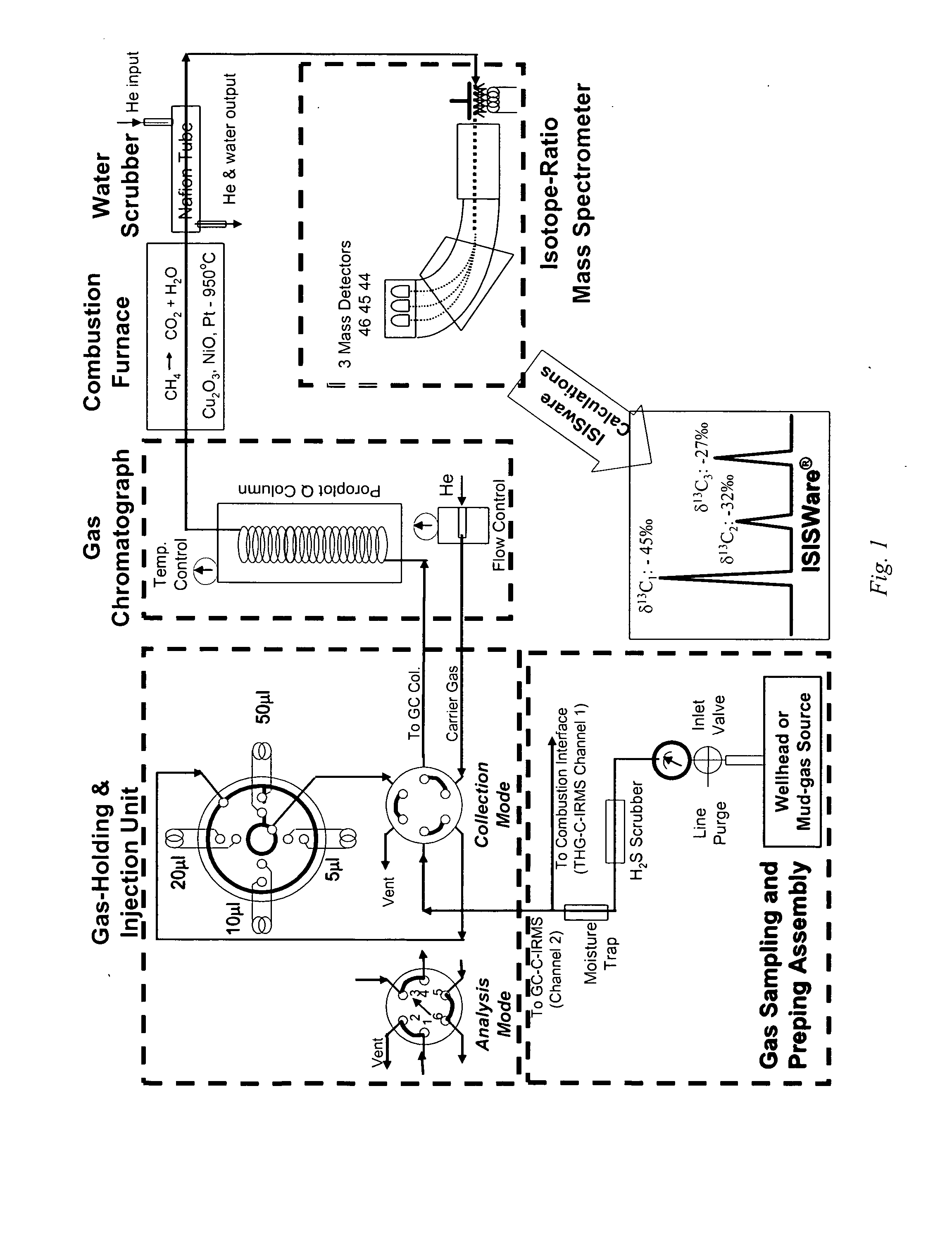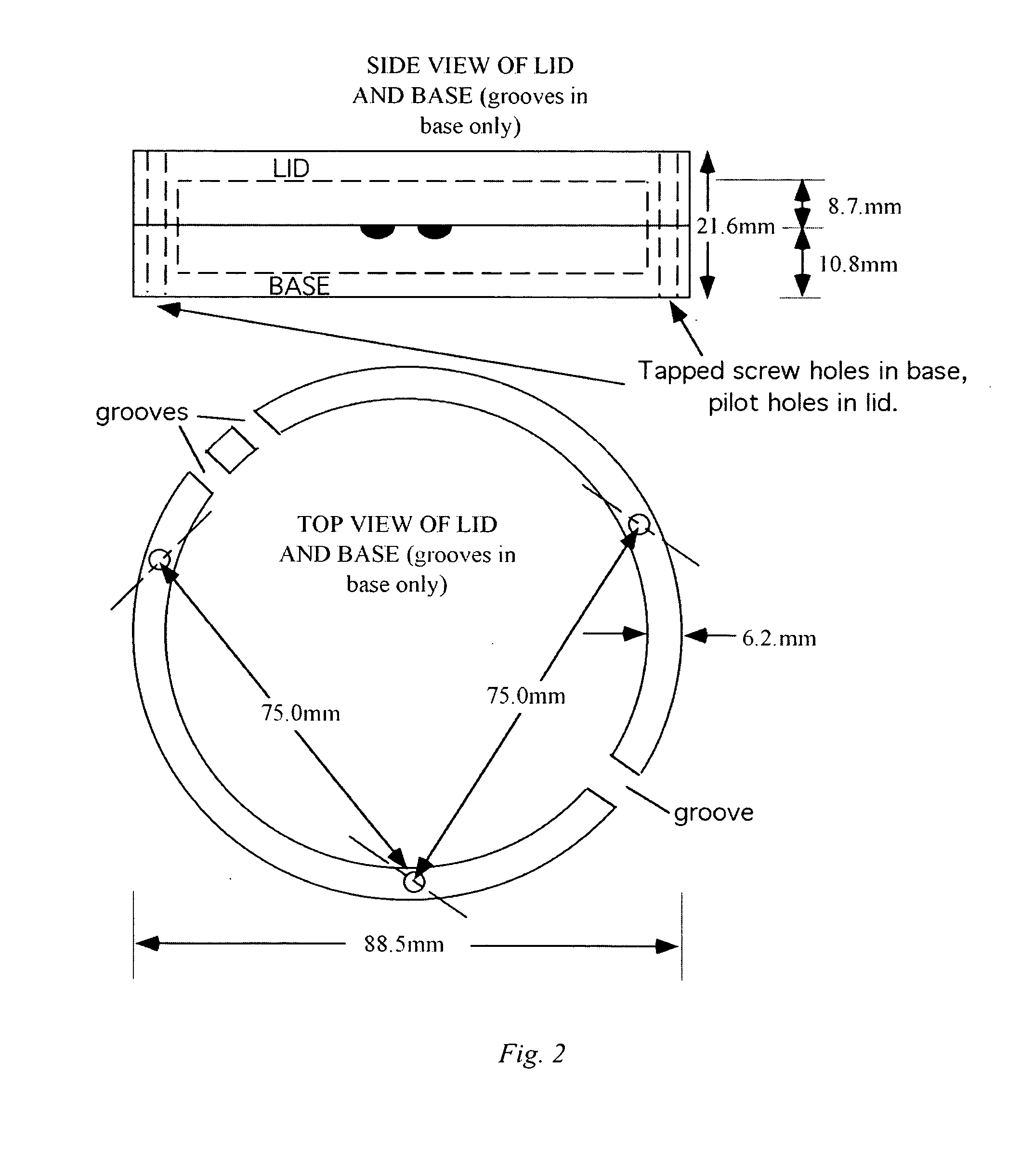Mobile system for in situ acquisition of carbon isotope data on natural gas
a technology in situ acquisition, which is applied in the field of mobile system for in situ acquisition of carbon isotope data, can solve the problems of limited application of this technology to its full extent in conventional natural gas exploration and production projects, deep tight-reservoir gas and coal-bed gas development projects and the inability to meet the requirements of high-pressure gas cylinder shipping
- Summary
- Abstract
- Description
- Claims
- Application Information
AI Technical Summary
Benefits of technology
Problems solved by technology
Method used
Image
Examples
Embodiment Construction
[0013] The present invention is a portable and robust field-deployable Combustion-Isotope Ratio Mass Spectrometer (C / IRMS) system that includes two parallel channels, one that allows monitoring at very high frequencies the isotopic signature of the Total Hydrocarbon Gas (THG) in the degassing mud stream (i.e., no separation, total C isotope analysis) via a Combustion-Dehydration-IRMS measurement assembly, and the other that allows collecting compound-specific isotope data on the critical hydrocarbon “shows” via a multi-sample holding and injection module connected to a GC / C / Isotope Ratio Mass Spectrometer assembly. The front ends of both channels send hydrocarbons (either the “raw” hydrocarbon gas mixture or the individual hydrocarbon compounds) into a combustion interface to combust hydrocarbons (including methane) quantitatively. The combustion products (CO2 and H2O) pass into an apparatus to remove water. The dry CO2 is automatically injected into the IRMS. It also has the capabi...
PUM
 Login to View More
Login to View More Abstract
Description
Claims
Application Information
 Login to View More
Login to View More - R&D
- Intellectual Property
- Life Sciences
- Materials
- Tech Scout
- Unparalleled Data Quality
- Higher Quality Content
- 60% Fewer Hallucinations
Browse by: Latest US Patents, China's latest patents, Technical Efficacy Thesaurus, Application Domain, Technology Topic, Popular Technical Reports.
© 2025 PatSnap. All rights reserved.Legal|Privacy policy|Modern Slavery Act Transparency Statement|Sitemap|About US| Contact US: help@patsnap.com



